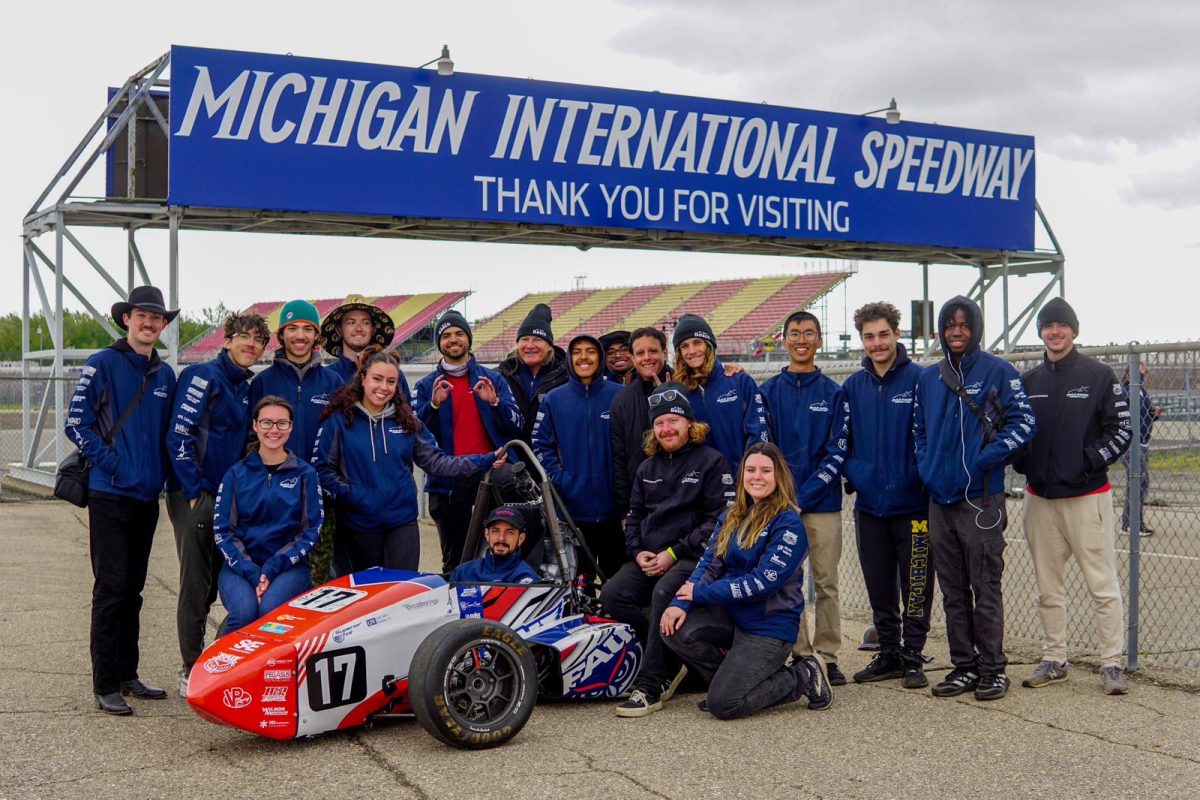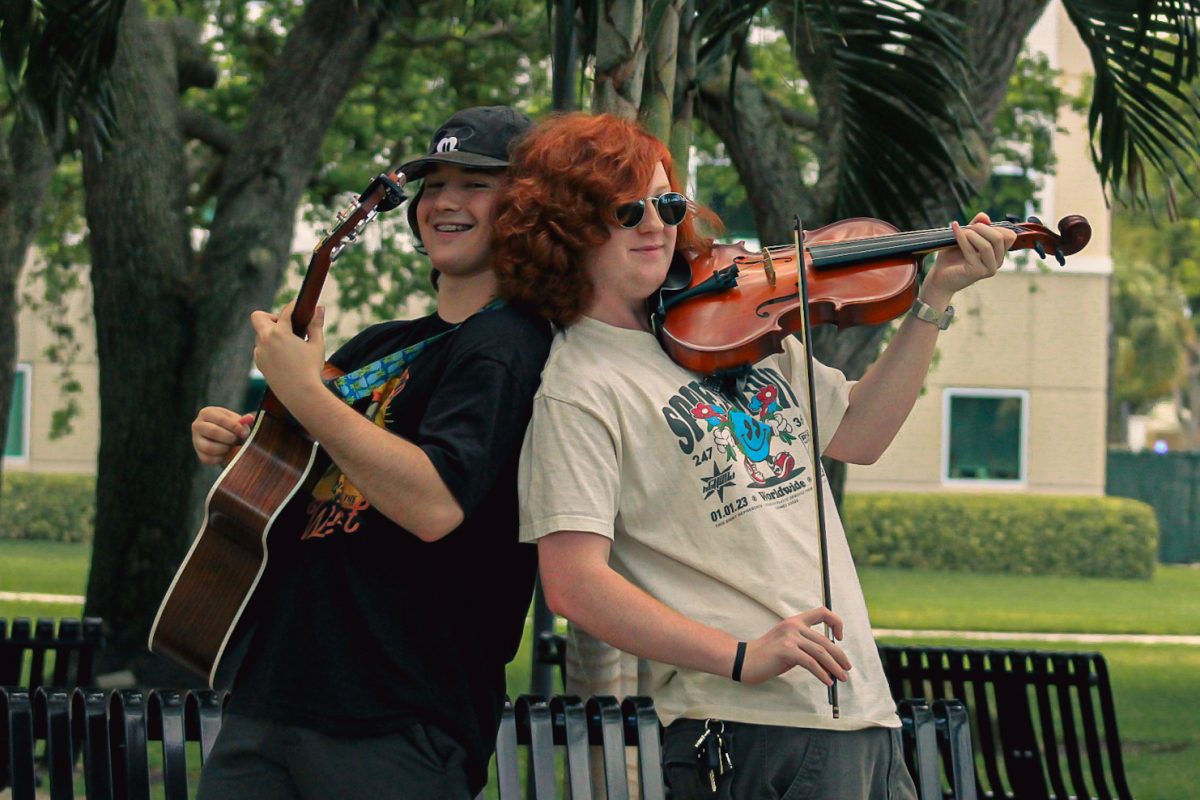Editor’s Note: A previous version of this article incorrectly listed the shop room number, which is actually 136, and misstated Andrew Olson’s aerospace job title.
Florida Atlantic University’s Society of Automotive Engineers (SAE) club, also known as Owls Racing (OR), provides a home for students interested in automobiles and mechanics.
OR is open to all FAU students or alumni with the opportunity to build, design and race cars from scratch. Andrew Olson, a former OR member says there are around 25 team members from different departments—including drivers, fuel specialists and those handling brakes and tires, who work together to build a racing car each semester. He then briefly explained the history of the OR club and how it evolved into what it is today.
“Owls Racing started back in the ’80s with SAE Baja, which involved building an off-road vehicle from scratch,” Olson said. “In 2004, the club transitioned to designing and building formula-style race cars. Since 2006, Owls Racing has been participating in national competitions.”
The club’s extensive history of innovation has fostered a culture of inclusivity and active participation. Adam Hernandez, the OR president and an FAU mechanical engineering senior, added that anyone can join the club.
“We utilize the skills of students of all majors on our team, from engineering students to medical students to business and marketing students,” Hernandez said. “Members would have to pay a $50 fee every year.”
Gabriella Posada, OR vice president, says there isn’t a set time commitment to be part of the club. However, members are encouraged to visit the shop, located in Engineering West, Room 136.
“I spend more time at the shop than I do in my apartment,” Posada said.
Posada continues to explain a new frame is designed each year for a different car, while the gas engine from the previous vehicle is typically reused.
“Everything else like the body panels, brake system and rotors are made in-house,” Posada said. “We design and build it all ourselves.”
The cars are named “OR” with the date of the year it was built, according to OR Treasurer Brandon DeNardo.
“For example, this year’s car will be ‘OR-25’ because we’re racing at competition in 2025,” DeNardo said. “Our car is internal combustion. It’s a gas engine; we use 100 octane.”

(Jackson Polston)
Once the car is fully assembled, the members practice in lot 5, behind the stadium, says Hernandez—but OR has to inform the FAU Police Department that they are using the area beforehand.
“We set up courses that help us prepare for our competition,” Hernandez said. “They usually practice at night when the parking lot is empty.”
Racing can be a very dangerous sport if certain precautions aren’t taken, according to Hernandez.
“The club frequently performs safety checks of our shop space and constantly reiterates safety rules while using machinery to its members,” Hernandez said.
When it’s time for racers to drive the vehicle, whether for practice or in a competition, there are safety measures put into place.
“Everyone that drives the car wears full fire-resistant racing undergarments, suits, shoes and gloves along with a helmet and a 6-point harness in the car,” Olson said. “The members are also trained to use the fire exhaust in case of emergencies. They also utilize hand signals and colored flags to notify the driver of their current situation. Members don’t have to sign a waiver to drive.”
OR has various opportunities to promote the team and the members’ skills at events. They participate in local car meets, state-wide competitions and more notably the Formula SAE Michigan Internal Combustion Competition, which is an annual international event in May.
Olson said to register for the competition, each team has to pay the $2,750 fee and submit all necessary documentation including for the race car.
“We must pass four inspections: mechanical tech inspection, fuel and tilt, sound and brakes,” Olson said. “Only when these inspections are complete can an institution participate in the competition.”
According to Olson, for the four-day race in Michigan, there are 120 universities that compete in four main categories: acceleration, skid pad, autocross and endurance.
“There is also an engineering design review event where we get judged on our engineering decisions for the car as well as a Business and Cost event,” said Olson.
The top three vehicles are displayed in an awards ceremony after the competition, says Posada.
About 20 FAU members are eligible to attend the competition. For races, drivers are selected based on who has the fastest time during practice, has worked on the car the most, and is most comfortable with racing the car.
Last year, the OR team finished in 71st place overall at the Michigan competition.
“We ran out of fuel on the final endurance race, but it’s an improvement from the year before,” Posada said. “That’s all I can ask for.”
In 2015, OR received second place in the business presentation and the highest placement overall at FSAE Michigan was 21st in 2017.
According to Olson, OR ranked third place last year at the Daytona Sports Car Club of America autocross event. This year, the team placed 65th in the Michigan competition.
Hernandez is aware that the club’s major commitment to managing school, work, extracurriculars and personal affairs can be challenging for university students.
“It all comes down to proper time management and not allowing yourself to get distracted,” Hernandez said. “Members of Owls Racing prioritize their academic commitments, especially during demanding periods, while still finding time to engage with the club.”
Posada advises drivers that balancing a full load is among the challenges that the team is faced with, as there are also physical and mental demands. She adds that racers must ensure that they are fully focused when racing which can be intimidating.
“Keep a calm mind, clear head and just try to have control over the vehicle,” Posada said.
Students acquire these practical experiences and skills that complement their classroom learning. Hernandez notes that this club fosters many opportunities for students such as
“Networking with professionals, practicing engineering design, gaining hands-on experience and making friends in your major,” Hernandez said.
Hernandez adds that club participation is an impressive addition to a student’s resume.
This extracurricular activity doesn’t count toward college credit but it exposes students to life-changing opportunities according to Olson, who currently has an aerospace job.
Posada adds that she is interning at Boeing, the world’s largest aerospace company. According to Denardo, other OR members have gotten job opportunities at NASA, Honda and Ford due to their experience at the club.
To the OR members, this organization is more than just a club—it is a close-knit community that bond of a common shared interest of automobiles and mechanics
“At the end of the day, we are more of a family than just a team,” Olson said. “We all create a bond and memories that will last a lifetime.”
Sephora Charles is a Contributing Writer for the University Press. For information regarding this or other stories, email sephoracharles26@gmail.com.









